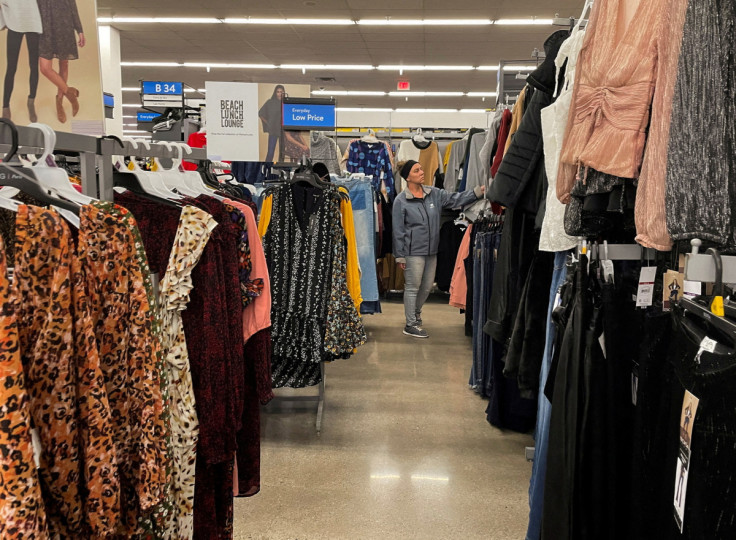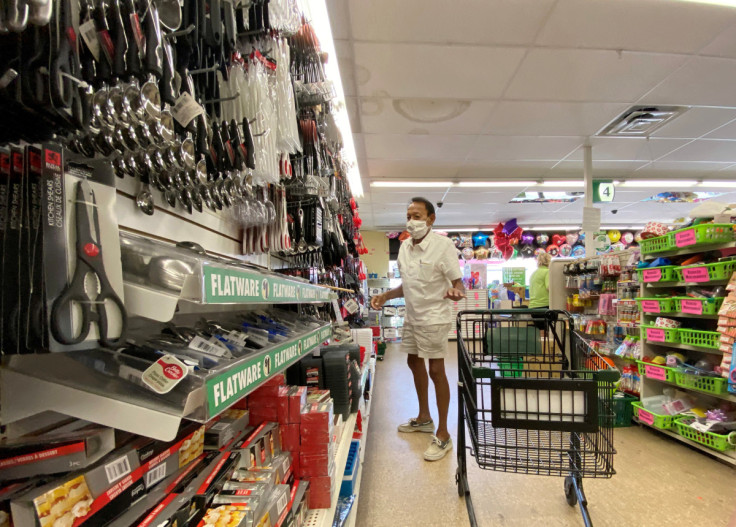US Retail Sales Fall Moderately; Producer Inflation Slowing

U.S. retail sales fell moderately in February, likely payback after the prior month's outsized increase, but the underlying momentum remained strong, suggesting the economy continued to expand in the first quarter despite higher borrowing costs.
The report from the Commerce Department on Wednesday followed on the heel of news last week showing solid job growth in February, and raised hope that the Federal Reserve could fight inflation without pushing the economy into recession.
News on inflation was somewhat encouraging, with other data on Wednesday showing producer prices unexpectedly falling last month, leading to the smallest year-on-year increase in nearly two years. Economic data is, however, taking a backseat to the unfolding turmoil in the financial sector, where the recent failure of two regional banks has stoked fears of contagion.
That has left the outlook for next week's rate decision from the Fed highly uncertain.
"American consumers still appear to be spending at a rate that will make the Fed uncomfortable with the inflation outlook, warranting a further tap on the brakes," said Sal Guatieri, a senior economist at BMO Capital Markets in Toronto.
"Of course, the Fed now has bigger fish to fry, making next week's decision less dependent on the data and more reliant on how the banking turmoil evolves."
Retail sales dropped 0.4% last month. Data for January was revised higher to show retail sales rising 3.2% instead of 3.0% as previously reported. Economists polled by Reuters had forecast sales would fall 0.3%, with estimates ranging from a 1.0% decline to a 0.5% increase.
Retail sales are mostly goods and are not adjusted for inflation. Economists said challenges adjusting the data for shifts in spending patterns at the end and start of the year as well as higher prices were among the factors that had exaggerated January's retail sales surge.
Last month's decline in retail sales was led by motor vehicle purchases, with receipts at auto dealers dropping 1.8% after accelerating 7.1% in January. Furniture store sales fell 2.5%, while receipts at clothing outlets decreases 0.8%.
Receipts at food services and drinking places, the only services category in the retail sales report, tumbled 2.2%. But online retail sales increased 1.6%, while receipts at electronics and appliance stores rose 0.3%.
Spending is being supported by a tight labor market, which is generating higher wage growth. There were 1.9 job openings for every unemployed person in January.
Consumers also still have a huge amount of savings accumulated during the COVID-19 pandemic. The Fed has raised its benchmark overnight interest rate by 450 basis points since last March from the near-zero level to the current 4.50%-4.75% range.
U.S. stocks opened lower amid renewed fears of a banking crisis. The dollar rallied against a basket of currencies. U.S. Treasury prices rose.
UNDERLYING STRENGTH
According to Bank of America Securities, an analysis of the bank's card data showed that services spending significantly outperformed goods spending in February. While this suggests the rotation of spending back to services helped to undercut retail sales last month, it should support overall consumer spending.
Excluding automobiles, gasoline, building materials and food services, retail sales rose 0.5% last month. These so-called core retail sales increased 2.3%% in January, revised up from the previously reported 1.7%.
Core retail sales correspond most closely with the consumer spending component of gross domestic product.
Consumer spending, which accounts for more than two-thirds of the U.S. economy, slowed in the fourth quarter, helping to restrict GDP growth to a 2.7% annualized rate. Growth estimates for the first quarter are currently as high as a 2.6% pace.
A separate report from the Labor Department showed the producer price index for final demand slipped 0.1% in February. Data for January was revised down to show the PPI increasing 0.3% instead of 0.7% as previously reported.
In the 12 months through February, the PPI increased 4.6%. That was the smallest annual gain in the PPI sine March 2021 and followed a 5.7% rise in January. Economists had forecast the PPI climbing 0.3% on the month and advancing 5.4% year-on-year.
The decline in the PPI was led by a 0.2% drop in goods prices, which followed a 1.2% increase in January. A 36.1% plunge in the cost of eggs accounted for more than 80% of the decrease in goods prices. Stripping out the volatile food and energy components, goods prices gained 0.3% after rising 0.6% in January. Services prices fell 0.1% for a second straight month.
Excluding food, energy and trade services components, producer prices rose 0.2% in February. The core PPI increased 0.5% in January. In the 12 months through February, the core PPI advanced 4.4%, matching January's gain.

© Copyright Thomson Reuters 2024. All rights reserved.




















